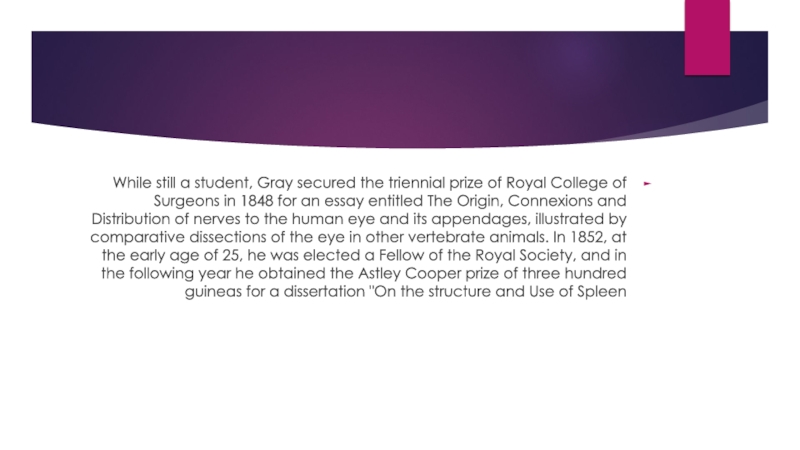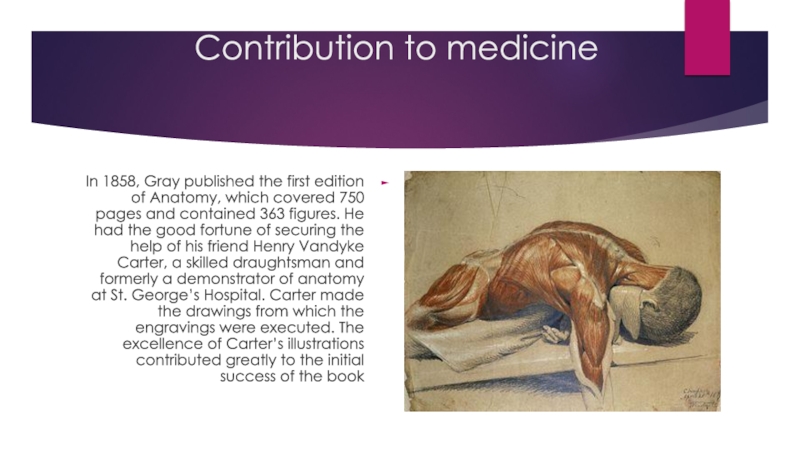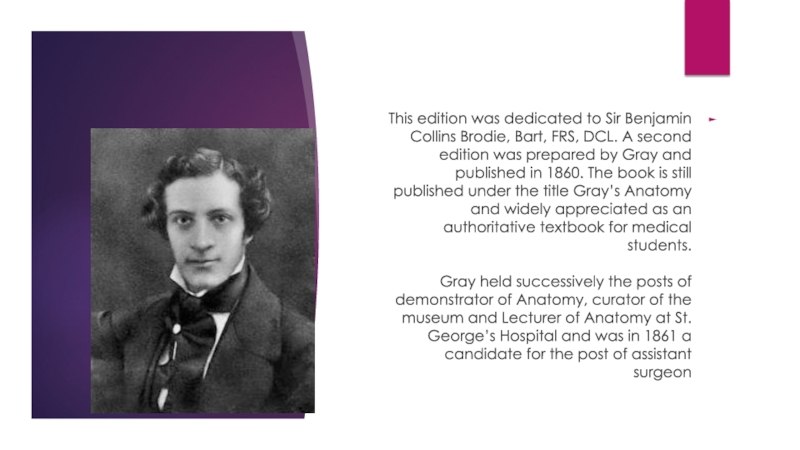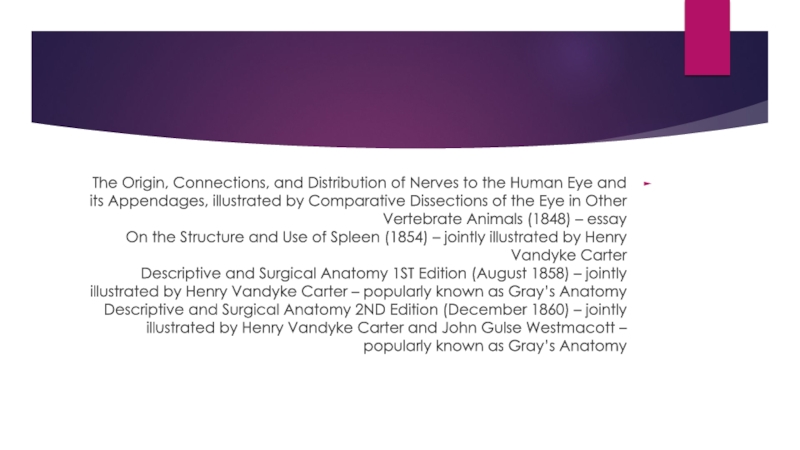Разделы презентаций
- Разное
- Английский язык
- Астрономия
- Алгебра
- Биология
- География
- Геометрия
- Детские презентации
- Информатика
- История
- Литература
- Математика
- Медицина
- Менеджмент
- Музыка
- МХК
- Немецкий язык
- ОБЖ
- Обществознание
- Окружающий мир
- Педагогика
- Русский язык
- Технология
- Физика
- Философия
- Химия
- Шаблоны, картинки для презентаций
- Экология
- Экономика
- Юриспруденция
Henry Gray (1827–1861) — English anatomist and surgeon, creator of Gray's
Содержание
- 1. Henry Gray (1827–1861) — English anatomist and surgeon, creator of Gray's
- 2. Ministry of Education and Science of the
- 3. BiographyGray was born in Belgravia, London, in
- 4. While still a student, Gray secured the
- 5. In 1858, Gray published the first edition
- 6. This edition was dedicated to Sir Benjamin
- 7. DeathGray was struck by an attack of
- 8. The Origin, Connections, and Distribution of Nerves
- 9. Conclusion Gray died of smallpox in 1861
- 10. Скачать презентанцию
Ministry of Education and Science of the Russian Federation "Penza State University"Medical Institute Department of History Course work History of Medicine Topic:Henry Gray (1827–1861) :
Слайды и текст этой презентации
Слайд 2Ministry of Education and Science of the Russian Federation
"Penza State University"
Medical Institute
Department of History Course
work History of Medicine Topic:Henry Gray (1827–1861) : done by Student: Elsayed Abdulrahman Group:19lc2a
:Controlled by: ass. Of History Department The course paper defended with
Mark: ....................
Teachers:.........................
Defense date:........................
Слайд 3Biography
Gray was born in Belgravia, London, in 1827[1][2] and lived
most of his life in London. In 1842, he entered
as a student at St. George’s Hospital, London (then situated in Belgravia, now moved to Tooting), and he is described by those who knew him as a most painstaking and methodical worker, and one who learned his anatomy by the slow but invaluable method of making dissections for himself.Слайд 4While still a student, Gray secured the triennial prize of
Royal College of Surgeons in 1848 for an essay entitled
The Origin, Connexions and Distribution of nerves to the human eye and its appendages, illustrated by comparative dissections of the eye in other vertebrate animals. In 1852, at the early age of 25, he was elected a Fellow of the Royal Society, and in the following year he obtained the Astley Cooper prize of three hundred guineas for a dissertation "On the structure and Use of SpleenСлайд 5In 1858, Gray published the first edition of Anatomy, which
covered 750 pages and contained 363 figures. He had the
good fortune of securing the help of his friend Henry Vandyke Carter, a skilled draughtsman and formerly a demonstrator of anatomy at St. George’s Hospital. Carter made the drawings from which the engravings were executed. The excellence of Carter’s illustrations contributed greatly to the initial success of the bookContribution to medicine
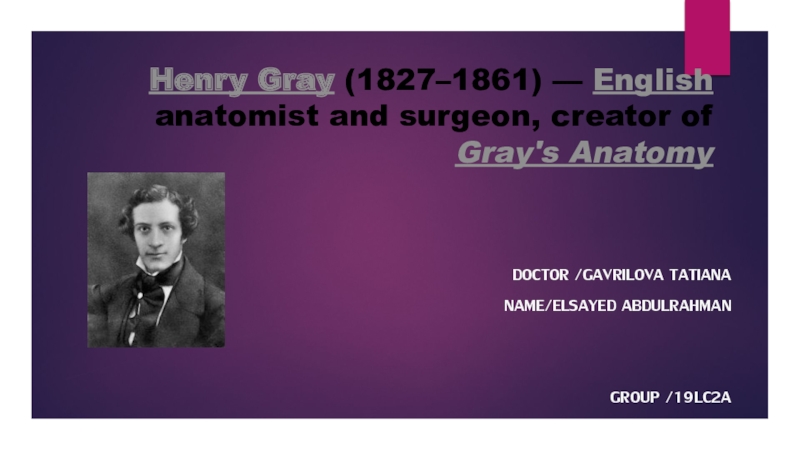

![Henry Gray (1827–1861) — English anatomist and surgeon, creator of Gray's BiographyGray was born in Belgravia, London, in 1827[1][2] and lived most BiographyGray was born in Belgravia, London, in 1827[1][2] and lived most of his life in London. In](/img/tmb/6/571461/900aef8ad4d55a9f5c69388d3874c5f8-800x.jpg)
